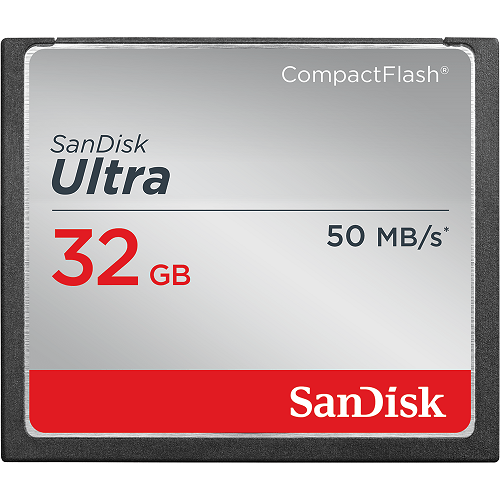By Lena Harman, Hyperstone GmbH
While the consumer market pursues the latest and greatest high-performance SSDs, industrial markets, where reliability trumps performance, are still using the CompactFlash form factor that was introduced decades ago. But decades-old form factors don’t necessarily have to use obsolete technology. Advances in Flash Translation Layer (FTL) and mapping algorithms, wear leveling, and error correction coding (ECC) have made it into the latest controllers designed for CompactFlash cards, where they allow these old form factors to use the recent, more cost-efficient Flash devices and provide larger capacities.
Enduring legacy
First introduced in 1994, CompactFlash has gone through several iterations and improvements that have kept it relevant even today, 23 years later. Compatible with PCMCIA and IDE interfaces, Compact Flash has been used since the 1990s as a simple way to integrate Flash memory into a mass storage system. While today’s client and enterprise storage devices mainly use SATA- and PCIe-based interfaces rather than PCMCIA and IDE, CompactFlash and PATA still have a big presence in industrial markets. CompactFlash is also widely used in top digital single-lens reflex (DSLR) cameras from Canon and Nikon, as well as networking routers and industrial equipment.
What’s the secret behind the enduring popularity of CompactFlash? Simply put, CompactFlash provides an easy-to-use, removable, durable Flash drive. With its robust case, it is heftier but also more rugged than the thin and flimsy SD cards with which it competes. In addition, unlike traditional 2.5-inch PATA, SATA, or today’s M.2 PCIe Flash drives, CompactFlash is designed to be installed and removed repeatedly. Without any training, an operator can switch out the Flash drive on a router or a piece of industrial equipment to upgrade its firmware or copy its contents. And unlike traditional hard drive form factors, there’s no separate power cable to fumble with because power is provided through the pins.

The robust body of CompactFlash drives make them more suitable to rough industrial applications than the SD card format. (Source: SanDisk)
CompactFlash today
The uses of CompactFlash can be divided into legacy and modern applications. In legacy systems, CompactFlash drives are being used either as first-generation Flash storage devices or to replace hard drives. These older systems often don’t require (and can’t take advantage of) faster speeds; they simply require a stable storage solution with a reliable source of replacements.
For these systems, product longevity is more important than raw performance. While consumer product lifecycles are often measured in months, industrial storage needs to remain in use and available from vendors for years, even decades. For these systems, then, storage solutions need to maintain consistent interface and operational characteristics for long periods. The key component for providing this interface is the Flash controller, so devices like Hyperstone’s F2 Flash controllers, which have been produced for 15 years and counting, make the most sense for designers.
Even though the interface and operational characteristics need long-term consistency, however, CompactFlash drives don’t have to be stuck in time with all the limitations of earlier Flash device designs. Modern CompactFlash drives can offer performance, capacity, security, and reliability that rivals today’s SATA drives while still providing the ruggedness as well as ease of installation and removal of traditional CompactFlash. This is possible because advanced CF controllers like Hyperstone’s F9 series offer designers many features to help leverage modern Flash technologies.

Advanced CF controllers like the Hyperstone F9 series support the use of modern Flash memory devices in industrial applications.
Enhanced wear leveling
One of these key features is enhanced wear leveling. Service life is an essential factor for industrial Flash drives, and because Flash memory devices have a limited number of write cycles, improving endurance can significantly reduce maintenance costs and lengthen operation lifetime for industrial equipment. The main mechanism that CF controllers use to lengthen service life is wear leveling. By spreading wear around the drive instead of repeatedly writing to the same locations, the maximum lifetime of an SSD can be achieved.
Page-based mapping FTL
A second key new feature involves the Flash Translation Layer (FTL), which maps the logical storage (file names) to physical device locations. All Flash storage systems need to map file system accesses to physical Flash accesses, but most removable Flash drives, especially older ones, map data in a so-called block-based mapping approach. This relatively large-grain mapping is easier to implement than other approaches, and in the past, Flash block sizes were relatively small, so the block-based mapping overhead was acceptable.
However, block-based mapping is far from ideal today because Flash device capacity has increased dramatically, resulting in larger block sizes that give rise to an endurance problem. While complex in detail, put simply, block-based mapping results in frequent block erases due to remapping activity, even if only a small amount of data has actually been written by the system. This is referred to as “high write amplification,” and the result is greater device wear.
Newer Flash controller technology, like hyMap from Hyperstone, performs data access at a much finer-grain level, smaller than a block or even a page. This is a more sophisticated method that requires more processing by the Flash controller, but it results in significantly better service life for the drive. By mapping (and thus manipulating) data at this more granular level, fast drive wear-out is avoided and endurance is greatly improved.
The page-based mapping FTL, along with modern BCH error correction that is compatible with recent Flash technology, allows for higher-capacity and lower-cost MLC or 3D NAND to be used in CompactFlash drives, even in industrial applications. This ability to use newer, higher-density Flash, in turn, not only improves capacity but also allows for higher-throughput devices. One drawback, however, is that Flash program times have increased, slowing things down, especially for small data-write operations. But again, advances in controller and interface technology as well as increased buffer space have compensated, enabling industrial-grade CompactFlash cards to achieve 120-MB/s read/write speeds.
DRAM-less operation
Another feature of modern CF controllers relates to data buffering. SSDs often use a temporary buffer for their mapping data and firmware tables, noting, for instance, which blocks of the Flash have been erased and how many times. Most SSDs temporarily store this information in volatile memory such as DRAM. This presents a significant reliability risk, however; a power failure at the wrong time could erase this important metadata.
Industrial SSDs using DRAM buffers thus need robust power protection. Some SSDs use supercapacitors as a backup power source, but this is an expensive approach, and capacitors can fail over time. A better approach is to avoid DRAM and its need for backup power by storing mapping information entirely in non-volatile memory. By storing mapping information away from volatile DRAM, drives can prevent serious data loss due to power failure. Combined with a transaction-based log, drives can ensure that data is always written to Flash successfully and maintain mapping table coherence.
Aside from the risk of failure and decreased robustness, using DRAM also poses a significant sourcing risk. The fast product lifecycles and volatile supply that DRAM has historically suffered can contribute to faster obsolescence and higher price volatility in SSDs as well.
Health monitoring
Modern CF cards also allow for health monitoring of the Flash drive using self-monitoring, analysis, and recording technology (SMART). Operating systems that support SMART can check the spare block count, block erase counts, total number of logical block addresses (LBAs) written, and other important drive health information. This allows users to monitor the service life of their drive as it is being used and replace it well before the end of its life.
Industrial endurance
While consumer and enterprise applications move onto other form factors, then, CompactFlash still lives on in many legacy and modern industrial applications. From telecom towers to networking routers to industrial equipment, the rugged and easy-to-install nature of CompactFlash has made it incredibly enduring. Today, CompactFlash drives are available that can fulfill legacy requirements while utilizing state-of-the-art technology. The latest CompactFlash controllers enable creation of fast, high-capacity drives with better performance and reliability features than ever. Sometimes old dogs can learn new tricks.

Lena Harman is responsible for digital marketing, online strategy and the optimization of online platforms at Hyperstone. She holds a double degree in Communications and International Studies from the University of Technology, Sydney.
Advertisement





